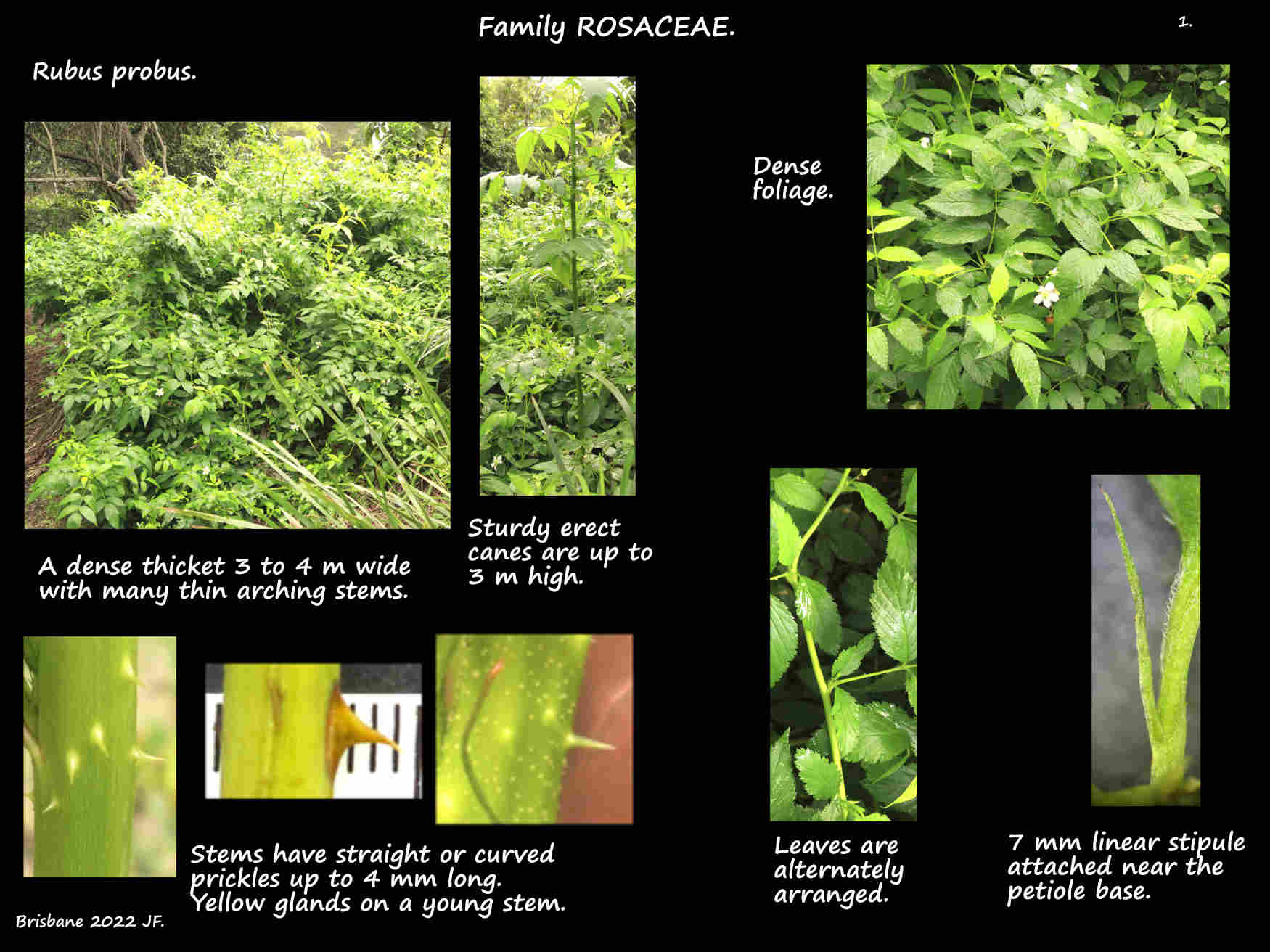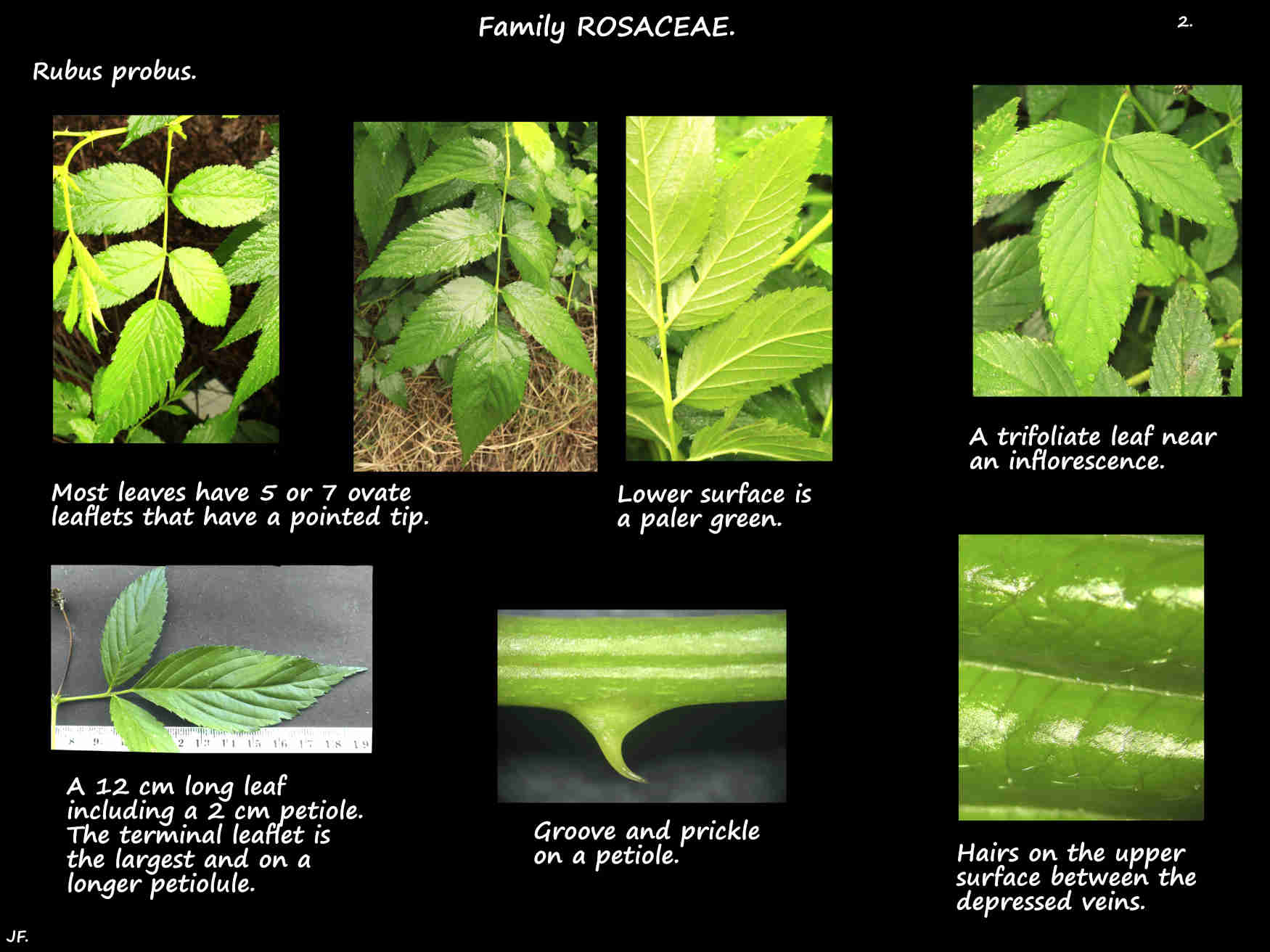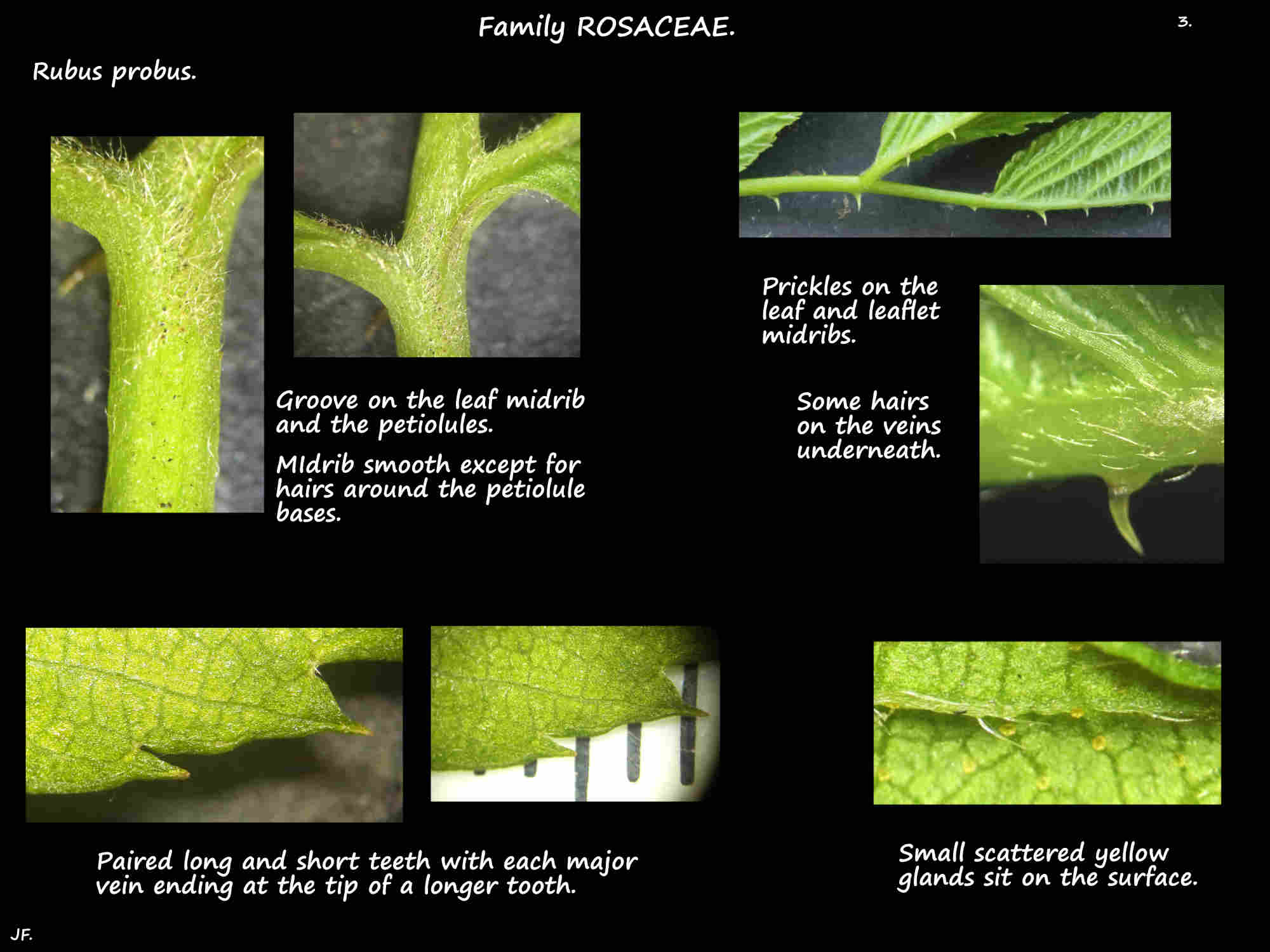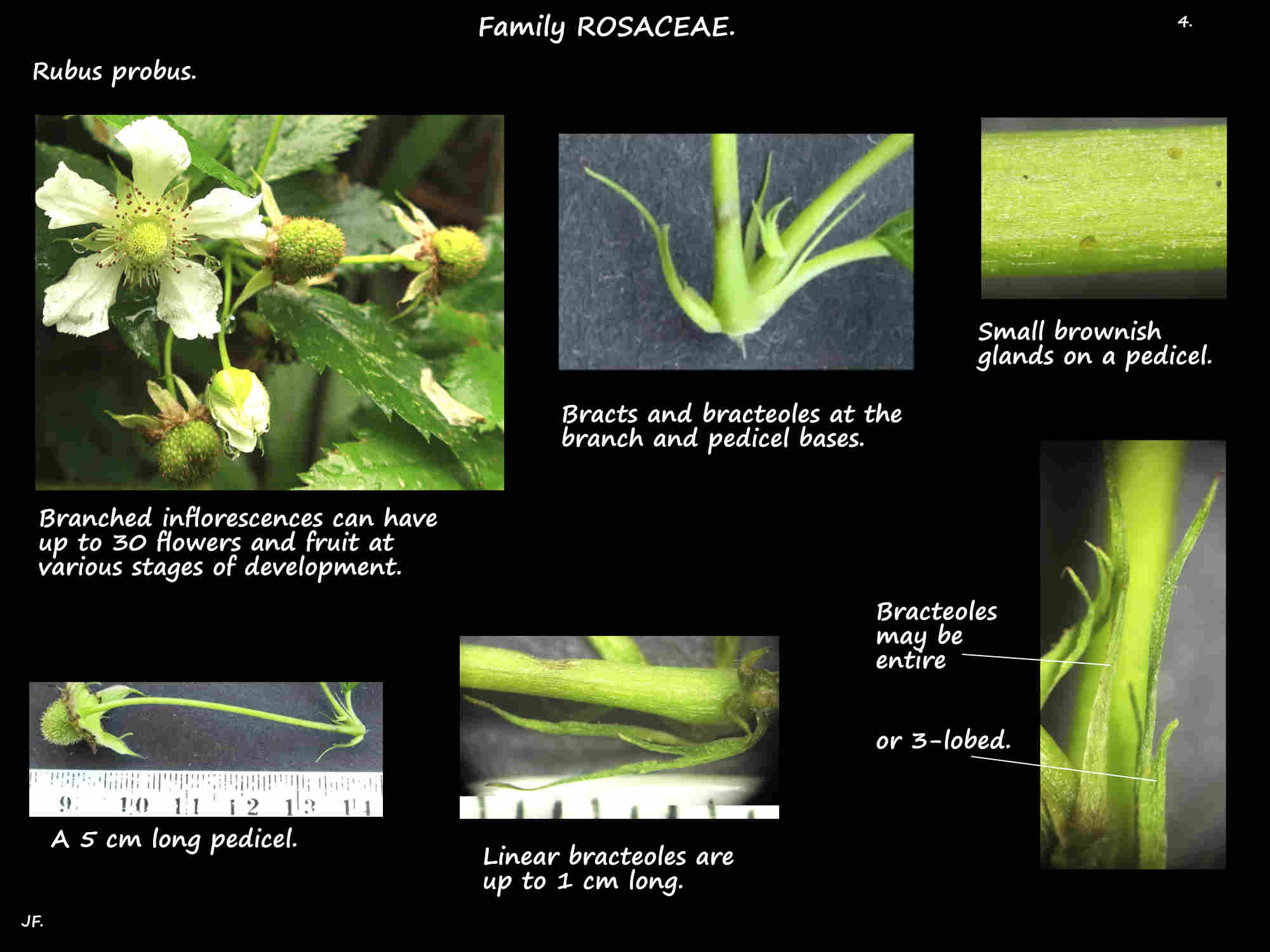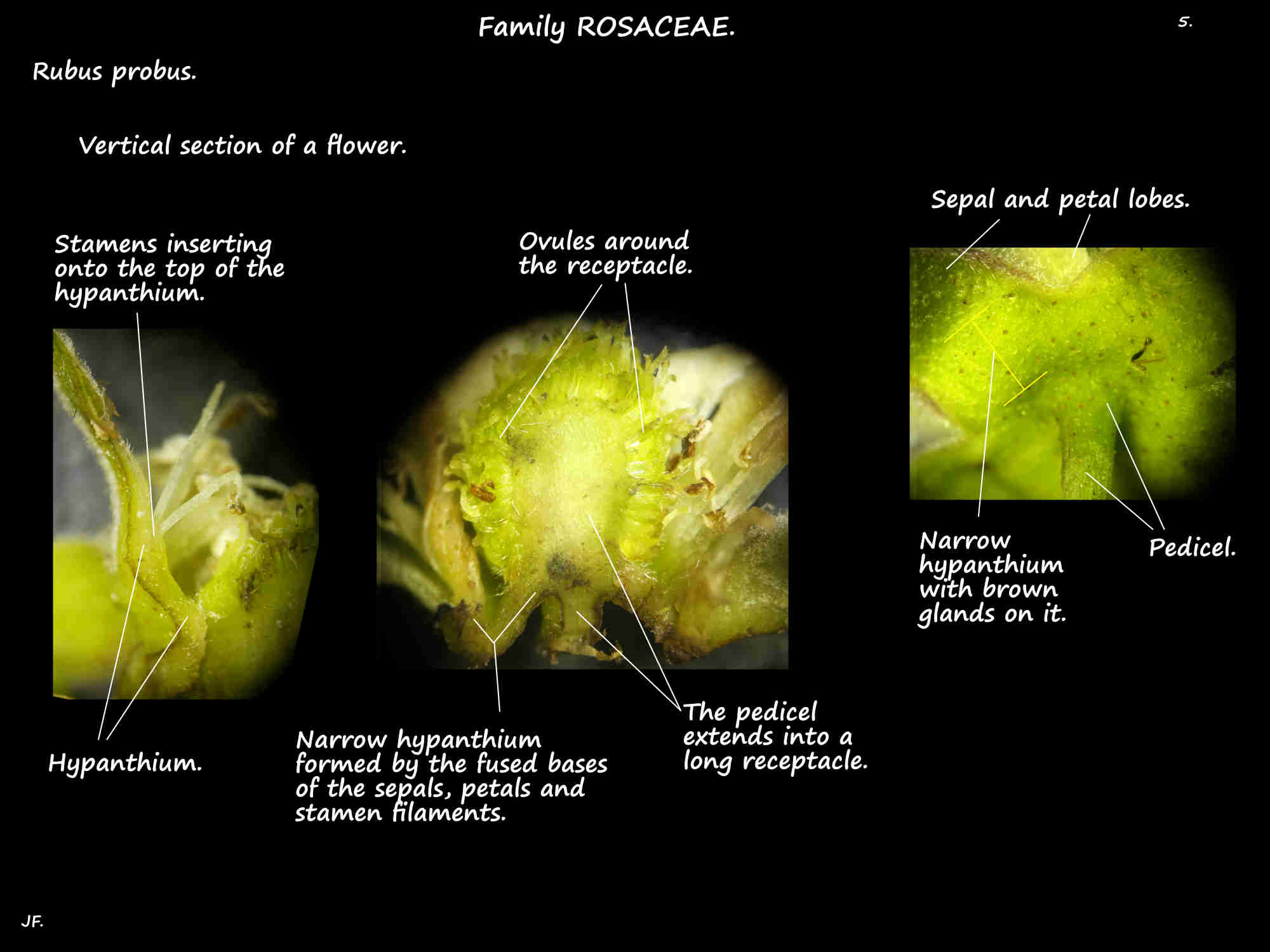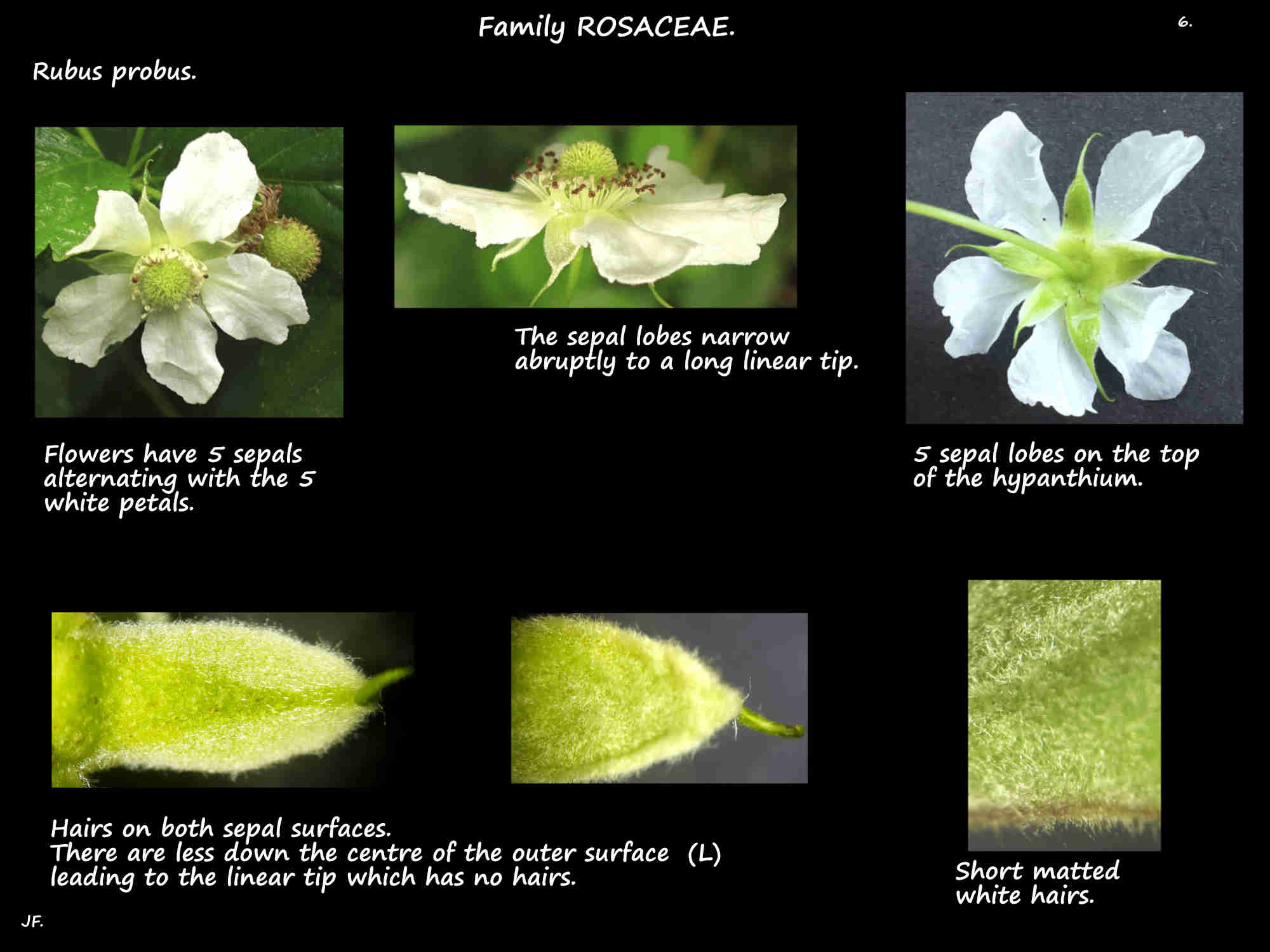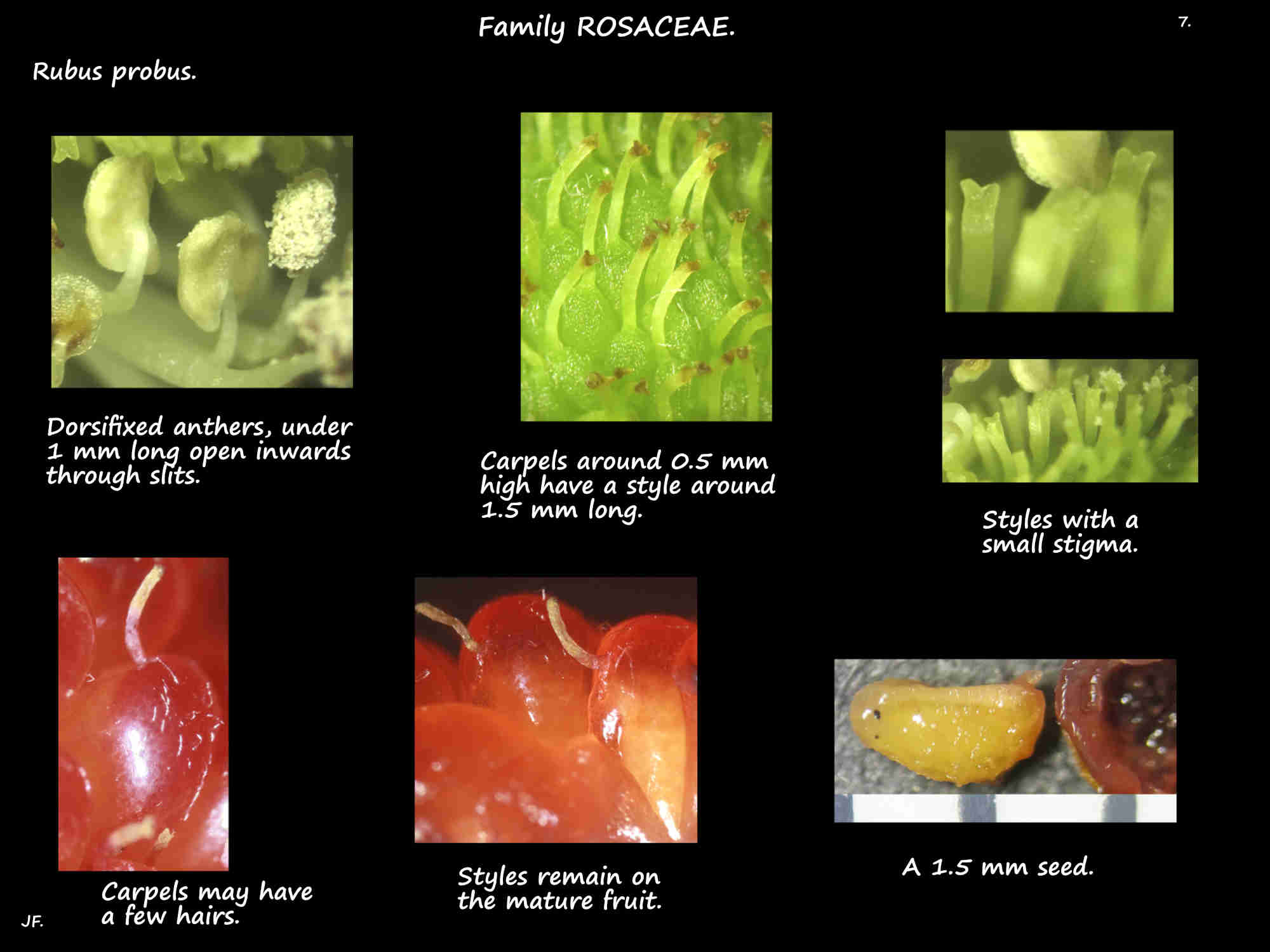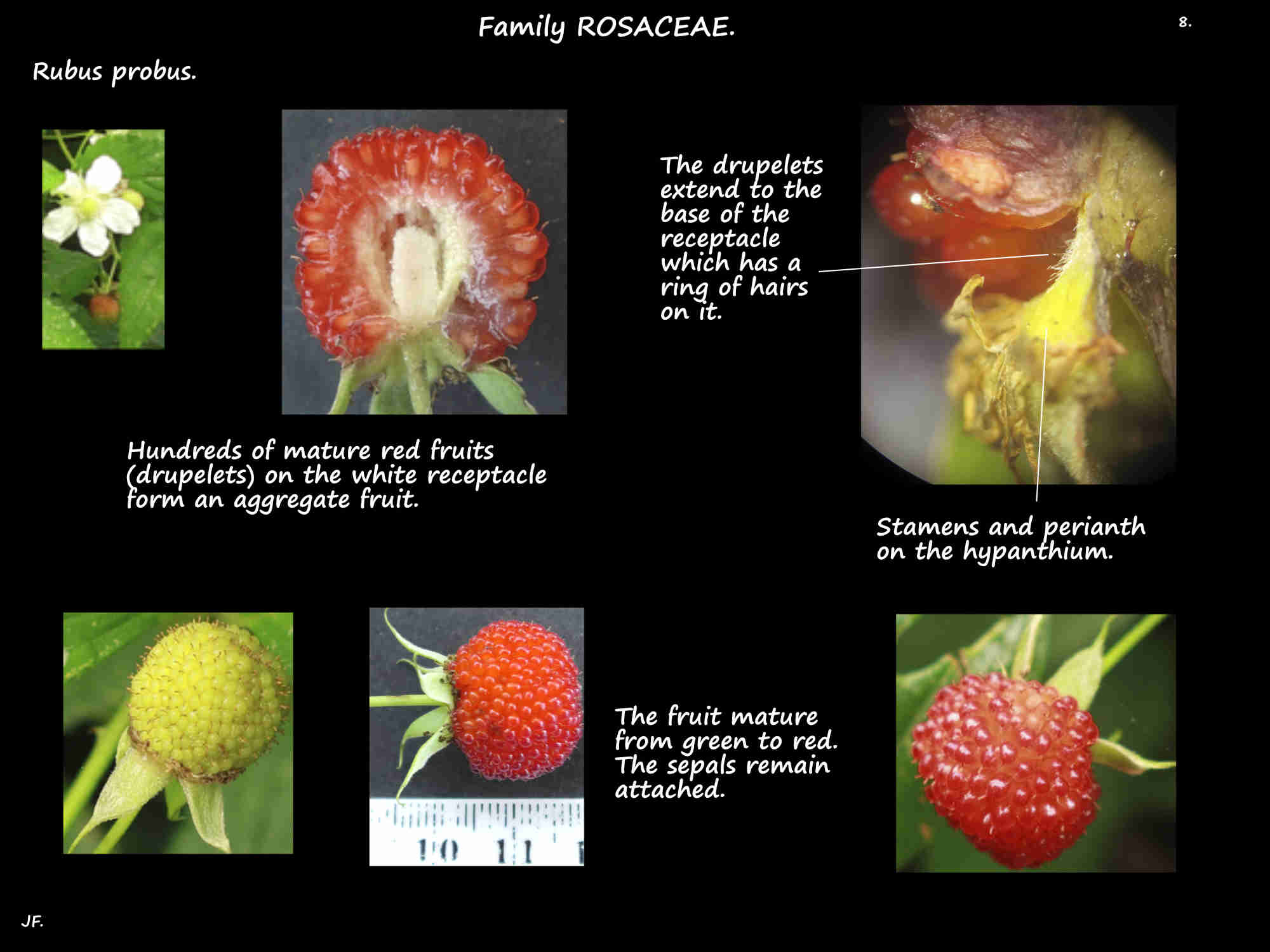Rubus probus.
It has also been known as Rubus fraxinifolius and Rubus muelleri.
The Wild or Atherton raspberry is native to Queensland and is found all down the east coast.
They are large vigorous shrubs that can form dense thickets.
Most stems are thin and arching but the thicker erect ones can be up to 3 m long.
They will scramble over other vegetation using curved prickles on the stems and leaves.
Stems usually have no hairs but there may be a few and some small yellow glands.
The strong prickles are up to 4 mm long and can be straight or curve downwards.
The alternately arranged leaves are pinnate with an odd terminal leaflet.
Leaves, up to 10 or 12 cm long and 5 cm wide are on petioles up to 6 cm long.
Petioles have a grooved upper surface and some prickles.
Linear stipules up to 12 mm long are attached just above the base of the petiole.
Most leaves have 5 or 7 leaflets with the occasional one having 9.
Leaves adjacent to an inflorescence may have 3 leaflets or be undivided.
The leaf midrib only has hairs around the base of the leaflet stalks (petiolules).
The midrib of the leaf and those of the leaflets may have some prickles.
The grooved petiolules of the lateral leaflets are up to 4 mm long while the terminal one can be up to 1 cm.
The leaflets are ovate and the terminal leaflet is often larger than the laterals.
The forward pointing teeth on the edge are in pairs with one being 1 to 2 mm longer than the other.
The pinnate veins are depressed on the upper surface and each ends at a long tooth.
There may be scattered hairs on both surfaces but mainly along the veins underneath.
There are scattered small yellow to brown glands on the lower surface.
Inflorescences are either terminal or in the leaf axils near the stem ends.
They are branched clusters up to 10 cm long with up to 30 flowers.
There are bracts at the base of each branch.
Flowers, on a pedicel up to around 2 cm long have no hairs but there are some yellow glands.
The linear bracteoles, up to 1 cm long can be entire or have 3 long thin pointed lobes.
There is a short hypanthium formed from the fused bases of the sepals and petals.
Its outer surface has yellowish glands but no hairs.
The 5 sepal and petal lobes on the hypanthium alternate with each other.
Up to around 12 mm they are all about the same length.
The sepal lobes have hairs on both surfaces but not on the long narrow linear tip.
The white petal lobes have a few hairs on the outer surface.
There are up to 150 stamens that insert onto the top of the hypanthium.
The filaments are up to 4 mm long with anthers under 1 mm.
The anthers are dorsifixed and open inwards through slits.
There may be over 100 separate carpels on the elongated receptacle (extension of the pedicel).
Around 0.5 mm long they may have a few hairs but no glands.
The longer styles, around 1.5 mm remain on the fruit as the ‘hairs’ on raspberries.
The fruit are aggregates of all the individual drupelets formed from each carpel.
They are up to 2 cm across, 1.5 cm long and mature from green to bright red.
The pale seeds are 1 to 1.5 mm.
J.F.

